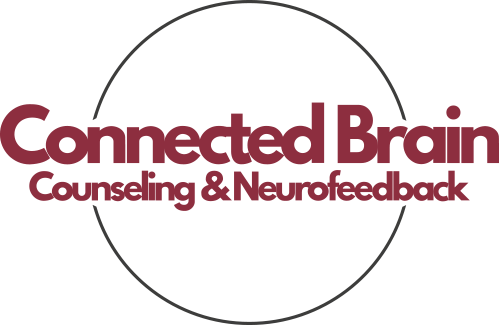The Science Behind Physical Touch
Physical touch, when done with affection and care, triggers a release of oxytocin in the brain. Oxytocin is often referred to as the “love hormone” or the “bonding hormone.” It enhances feelings of trust, security, and comfort between partners, making them feel closer emotionally. This hormone helps create a sense of safety in relationships, reinforcing emotional connections during moments of stress, joy, or vulnerability.
Additionally, physical touch has been shown to reduce cortisol levels, the hormone responsible for stress. The simple act of holding hands or sharing a hug can lower blood pressure, improve mood, and create a sense of calmness between partners. This physiological response supports emotional intimacy and can prevent feelings of isolation within a relationship.
How Physical Touch Impacts Relationship Satisfaction
One of the key ways that physical touch strengthens relationships is by helping partners feel valued and emotionally connected. Regular touch fosters a sense of belonging and affection that goes beyond words. It reassures both partners that they are loved, appreciated, and desired.
- Emotional Security: Partners who experience regular touch are more likely to feel secure in their relationship. Physical affection communicates love and devotion in a way that words often cannot.
- Improved Conflict Resolution: Studies show that couples who engage in physical touch are better equipped to handle conflict. Touch can help defuse tension, promote empathy, and create a supportive environment for problem-solving.
- Greater Relationship Satisfaction: Couples who prioritize physical affection often report higher levels of satisfaction in their relationships. These small moments of connection, like holding hands or sharing a kiss, can help keep the relationship strong and enduring.
Types of Physical Touch That Strengthen Relationships
Not all touch is the same, and different forms of physical affection can communicate a variety of emotions and intentions. Some of the most meaningful forms of physical touch in relationships include:
- Hand-Holding: Holding hands is a subtle but powerful way to show affection and connection. It’s a simple gesture that can be done anywhere, from walking in the park to sitting on the couch. It provides a sense of unity and partnership.
- Hugging: Hugging, especially prolonged hugs, helps reduce stress and create a sense of comfort. A hug can communicate support, empathy, and unconditional love.
- Kissing: Whether it’s a quick peck on the cheek or a 6-second kiss, kissing brings a sense of closeness and intimacy to a relationship. It’s an expression of desire and affection that strengthens the bond between partners.
- Gentle Touches: Light touches, such as placing a hand on your partner’s back or brushing their arm, are small but meaningful gestures that communicate affection. These brief moments of connection can make your partner feel cared for and appreciated.
Barriers to Physical Touch in Relationships
Despite its importance, physical touch can sometimes become less frequent as relationships progress. Stress from work, family obligations, or simply being caught up in daily routines can lead to partners neglecting physical affection.
- Busy Schedules: With modern life often pulling couples in different directions, it’s easy for physical touch to fall by the wayside. However, even a few moments of intentional physical contact can make a difference.
- Emotional Distance: In some cases, unresolved conflicts or growing emotional distance can lead partners to withdraw physically. Addressing emotional issues can help revive the level of physical affection in the relationship.
- Comfort Levels: Not all people express love through physical touch. For those who are less comfortable with it, communication is essential. Couples need to find a balance that respects individual boundaries while ensuring both partners feel loved and connected.
 How to Incorporate More Physical Touch into Your Relationship
How to Incorporate More Physical Touch into Your Relationship
If physical touch has faded in your relationship, it’s never too late to bring it back. Here are a few ways you can make physical affection a more consistent part of your relationship:
- Make Time for Touch: Whether it’s cuddling before bed or hugging when you wake up in the morning, finding moments throughout the day to connect physically can make a big impact.
- Be Intentional: Don’t let touch become routine or absentminded. Focus on being present and mindful when you engage in physical affection, ensuring that your partner feels the warmth of your love and attention.
- Communicate Needs: If one partner craves more physical touch than the other, it’s important to have an open conversation about how to meet those needs without pressuring or overwhelming each other. Finding a balance is key.
- Use Touch to Reconnect After Arguments: Physical affection after a disagreement can help repair emotional wounds and bring partners closer. Whether it’s a hug or holding hands, touch can symbolize reconciliation and understanding.
Physical touch is a critical component of maintaining intimacy and connection in relationships. It fosters emotional security, reduces stress, and improves overall relationship satisfaction. For couples looking to deepen their emotional connection, focusing on regular and intentional physical touch can make a significant difference.
- Psychology Today – Why Physical Touch Matters
A detailed article explaining the psychological and physiological benefits of physical touch in relationships. - The Gottman Institute – How to Reconnect with Physical Touch
Insights on how couples can use physical touch to reconnect and build emotional intimacy. - Healthline – The Power of Hugging
This article outlines the benefits of hugging, including stress reduction and emotional bonding.
If you and your partner are struggling to connect, or if physical touch has faded from your relationship, Connected Brain Counseling is here to help. Contact us today for a free consultation and learn more about how to strengthen your relationship through meaningful emotional and physical connection.





